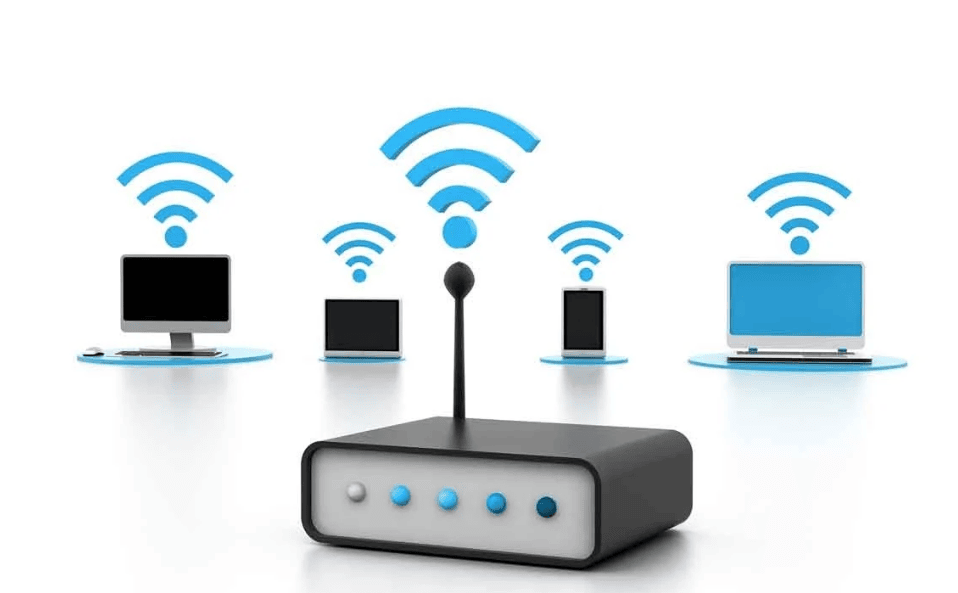
In today’s fast-paced digital environment, businesses can’t afford to choose between wired and wireless networks—they need the best of both worlds. Wired networks provide superior speed, stability, and security,
while wireless networks deliver the mobility, flexibility, and convenience that modern workforces demand.
However, combining wired and wireless systems without a proper integration strategy can result in bottlenecks, security vulnerabilities, inconsistent user experiences, and complex IT challenges.
At Atlas Channels, we specialize in designing seamless LAN environments that unify wired and wireless infrastructures into a single, powerful, easy-to-manage ecosystem. A truly integrated network means your team can move effortlessly between wired and wireless connections without noticing any difference in speed, security, or reliability.

First, What’s the Difference?
Wired Network
This means devices are connected with physical cables—usually Ethernet cables—to a router or switch.
✅ Pros
- Faster and more stable
- Great for large files or video calls
- More secure
🚫 Cons
- Can’t move around easily
- Needs more cables and setup
Wireless Network (Wi-Fi)
This allows devices to connect without cables. Think smartphones, tablets, and laptops using Wi-Fi signals.
✅ Pros
- Mobile and flexible
- Easy to set up
- No messy cables
🚫 Cons
- Can be slower or less reliable
- Easier to hack if not secured well
Why Integration Is Important
- Productivity Boost:
Integrated networks empower employees to work efficiently from anywhere within the office—whether at a desk connected via Ethernet or in a meeting room connected via Wi-Fi. No interruptions, no lag. - Reduced IT Complexity:
Managing separate wired and wireless systems adds unnecessary complexity. A unified network is easier to manage, monitor, troubleshoot, and secure from a single platform. - Improved User Experience:
Seamless integration ensures no dropped connections, no frustrating speed inconsistencies, and no complicated logins when moving from one part of the office to another. - Future-Proof Infrastructure:
As remote work, IoT devices, and cloud applications grow, having a scalable, integrated network ensures you’re ready for future demands without major overhauls.
Key Components of a Seamless Network
At Atlas Channels, we follow a tested framework to ensure your wired and wireless systems work together smoothly:
1. Centralized Network Management
We deploy solutions that allow IT teams to monitor, configure, and troubleshoot both wired and wireless networks from a single unified dashboard. Whether using cloud-based platforms like Meraki or on-premises systems, centralized management provides:
- Real-time network visibility
- Simplified device management
- Streamlined firmware updates
- Faster incident response
This approach reduces administrative overhead and ensures proactive management.
2. Intelligent Network Design
Smart design is the foundation of a successful hybrid network. Our planning process includes:
- Site Surveys: Mapping out building layouts to identify signal strength, interference sources, and high-traffic areas.
- Switch Deployment: Installing enterprise-grade switches with VLAN (Virtual LAN) capabilities to segment traffic logically.
- Access Point Placement: Strategically locating Wi-Fi access points (APs) for optimal coverage and minimal interference.
- Cable Management: Designing efficient cabling for wired connections, ensuring minimal latency and clutter.
By designing with both performance and scalability in mind, we ensure your network can adapt to your future needs.
3. Advanced Security Integration
An integrated network must maintain consistent, ironclad security, regardless of whether users are connected via Ethernet or Wi-Fi. Atlas Channels implements comprehensive security frameworks, including:
- Unified Threat Management (UTM) Firewalls: Providing intrusion prevention, antivirus protection, and content filtering.
- Secure SSIDs: Using WPA3 encryption standards for maximum wireless security.
- Guest Network Segmentation: Isolating guest devices from internal business systems.
- Role-Based Access Control (RBAC): Granting network access based on user roles, ensuring employees only access appropriate resources.
This consistent security posture reduces risk across your entire environment.
4. Quality of Service (QoS) and Bandwidth Management
Not all traffic is created equal. We configure your network to prioritize critical applications like:
- VoIP phone calls
- Video conferencing (Zoom, Teams, etc.)
- Cloud storage synchronization
By implementing QoS policies at the switch and access point level, we prevent congestion, reduce latency, and deliver a smoother experience for essential business applications.
5. Seamless Roaming and Fast Handoffs
Modern workspaces demand that users stay connected as they move. Atlas Channels deploys Wi-Fi 6 and Wi-Fi 6E access points that support:
- Fast Roaming (802.11r/k/v standards): Allowing devices to automatically switch access points without manual reauthentication.
- Load Balancing: Evenly distributing devices across APs to prevent overload.
- Band Steering: Guiding devices to the best available frequency (2.4GHz vs. 5GHz) for optimal performance.
This results in users moving around your office without experiencing connection drops or speed declines.
Common Integration Challenges We Solve
Over the years, we’ve helped businesses overcome the most common hybrid network hurdles, such as:
- Dead Zones: Eliminating weak signal areas with smart AP placement and signal tuning.
- Policy Inconsistencies: Ensuring wired and wireless users experience the same access permissions and security measures.
- Limited Visibility: Providing full insight into user behavior, device health, and network performance.
- Latency or Jitter: Addressing performance drops when switching between wired and wireless networks.
No matter the challenge, Atlas Channels engineers deliver solutions that meet today’s needs and anticipate tomorrow’s growth.
Common Mistakes to Avoid
- Using different networks for wired and wireless devices
- Putting the router in a hidden corner (weak Wi-Fi signal!)
- Forgetting to change the router’s default username/password
- Mixing old and new equipment (slows things down)
- Not updating firmware on routers and switches
Atlas Channels Makes it Seamless
Whether you’re upgrading a legacy system or designing a new office from scratch, Atlas Channels is your trusted partner for:
- Infrastructure Assessment: Thorough analysis of your current setup.
- Solution Recommendation: Tailored hardware and software selections (switches, APs, controllers, firewalls).
- Professional Installation: Expert cabling, device deployment, and configuration.
- Ongoing Support: Proactive monitoring, security updates, and performance optimization.
With Atlas Channels, wired stability meets wireless freedom—giving your business speed, security, and the ability to scale without compromise.
Ready To Build a Unified Network
Contact Atlas Channels today to discuss how a seamless LAN integration can transform your business connectivity. Let’s build a smarter, faster, more secure future—together.
